The rough-in American Std. shower valves are highly appreciated as they are interchangeable and sustainable from many angles. However, there are some common American Standard shower valve problems that make the users worry a lot and doubt the quality of the valves.

Problems like making noise, working reversed, pouring less water, etc. don’t occur because of the built quality. Instead, they can arise due to aging, bad installation, or hard water supply in your home. Whatsoever, you can get rid of those issues without changing the valves most of the time.
Today, we’re here to talk about those problems that you consider hard to deal with. We are giving solutions to each problem so that you can solve them all by yourself. So, let’s jump into action.
American Standard Shower Valve Problems [6 Easy Solutions]
In this world, problems related to a specific thing don’t have a clear definite number. That’s why it’s hard to tell how many problems you can possibly face by using new or old American Standard shower valves.
Thus, we’ve decided to discuss only those issues that are pretty common and people often complain about. Here are the 6 issues you can face while using American Std. shower valves.
Note: You can also read how to fix kohler shower valve no hot water.
Table of Contents
1. Shower Valve Clogged
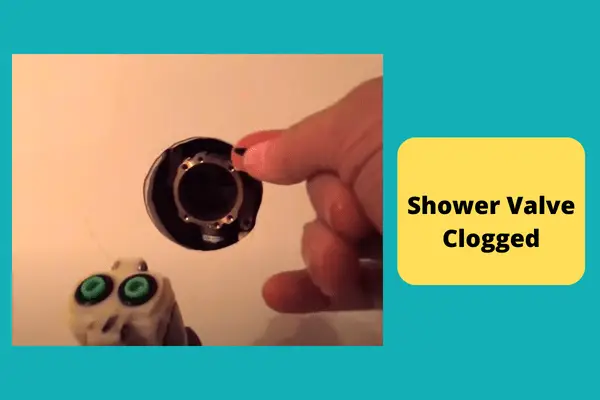
Key Reasons:
- Mineral deposits in the valve and cartridge over time block the water gateway.
- Unfiltered hard water in the supply line also creates a blockage in the valves.
Symptoms:
- Water coming less from the shower or faucet
- Water leaks from the handle due to excessive pressure because of the blockage.
Solution:
- Turn off the main supply and start removing the shower handle set.
- After removing the nickel collar and plating, you can see the cartridge with the valve clearly. Bring off the cartridge and put it in a bucket filled with water and vinegar solution for nearly a couple of hours.
- Cover your index finger with a soft cloth soaked in the same vinegar solution. Put the finger inside the valve’s housing and rub off the mineral buildups.
- 2 hours later, take the cartridge and rub it with a small toothbrush to remove debris and mineral. Then, reinstall the cartridge and handle set properly.
2. Hot And Cold Reversed
Key Reasons:
- The shower valve is mounted reversed
- The valve cartridge has got rotated during installing the handle
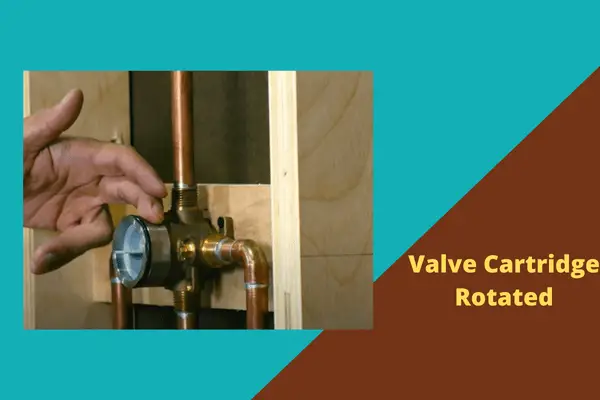
Symptoms:
- The valve works opposite the user’s command with the handle.
Solution:
- Firstly, bring out the handle and reveal the cartridge. Put off the cartridge pin and twist 180 degrees to gain the right position for the cartridge. Then, put the pin back and test the showerhead.
- If the shower’s still working reversed, try rotating the valve. The valve ends might be connected with the wrong inlets. Rotating the whole structure might make things okay.
- But you’re in trouble when the valve model isn’t reversible. You should contact the dealer and ask to solve the American Standard shower valve hot and cold reversed situation.
3. Shower Valve Leaking
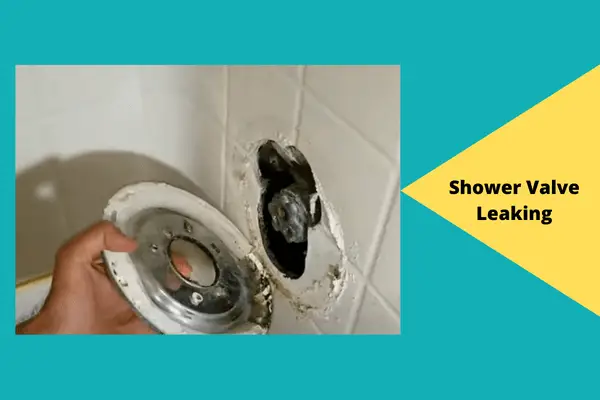
Key Reasons:
- You can find the American Standard shower valve leaking when the water pressure is too high.
- If the rubber sealings are worn-out, the water would come out of the valve.
Symptoms:
- An American Standard shower valve dripping constantly
- Moss growing around and below the handle
Solution:
- Firstly, make sure the leakage is only from the handle or valve, not any outlets.
- Check your residence’s main valve. Put the valve on the right pressure range (around 50 PSI). Then, see if the water’s still dripping from the handle or not.
- If nothing’s solved yet, open the shower valve by removing the handle and trim kit. There must be any O-ring seals or covers being corroded because of years of use. You need to replace those worn-out seals and reinstall everything properly.
4. Shower Valve Being Noisy
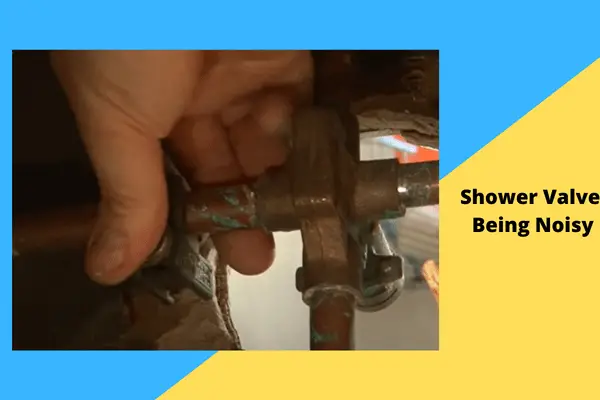
Key Reasons:
- The shower valve can become thin due to corrosion after years of use. For this, the construction would vibrate when there’s water pressure and make an awful noise
- Worn-out rubber parts are also the reasons for noisy shower valves. The friction between the components is unavoidable when the washers and rubber rings aren’t strong enough.
- If the valve system isn’t locked behind the walls, it’d shake and become noisy.
Symptoms:
- The shower valve whistling or making a noise like a motor
Solution:
- You need to make sure the water pressure is within the eligible range from the main valve. You can also install a pressure regulator beside the mother valve to keep the pressure under control.
- Dismount the handle and trim kit from the wall. Then, bring out the valve and cartridge.
- Dismantle the valve and observe every component individually. Identify which ones need replacement.
- Clean the valve component if there are any deposits or debris.
- Now, look inside the housing behind the wall. If there’s no locking system that can hold the valve and the lines with the wall, hire a plumber to install brackets inside.
- Reinstall everything properly and put the balancing spools and diverters in the right position.
5. No Hot Or Cold Water
Key Reasons:
- The anti-scald device over the cartridge might block the proper movement of the handle to control the temperature.
- Any of the temp lines can have clogged or frozen parts blocking the shower chain.
- Spools in the inlets aren’t in the same position and causing an imbalance between hot and cold water.
Symptoms:
- Less supply of hot or cold water
- Water pressure is less on one side
Solution:
- When you remove the shower handle, you can see a white device mounted over the cartridge. It limits the movement of the handle. This anti-scald device can be too strict towards a side of the cartridge that makes less hot or cold water. Adjust the position of the limiter to make sure both hot and cold supplies are even.
- If the anti-scald device is not the issue, try adjusting the balancing spools on the hot and cold inlets. They should be in the same position for even distribution. Alongside, you also need to open the other mainline valves properly to get enough water.
- But if the problem is mainly the lack of cold water, the frozen pipe can be a big reason behind the imbalance. Manually heat the cold water line for a while using a hair dryer to unfreeze the line.
- And most importantly, open the showerhead and put the main valve fully open. Then, hammer the pipes to break the stubborn deposit layers inside. When you think the layers have become loose, turn on the shower and let the minerals go out along with the water.
6. Valve Won’t Shut Off
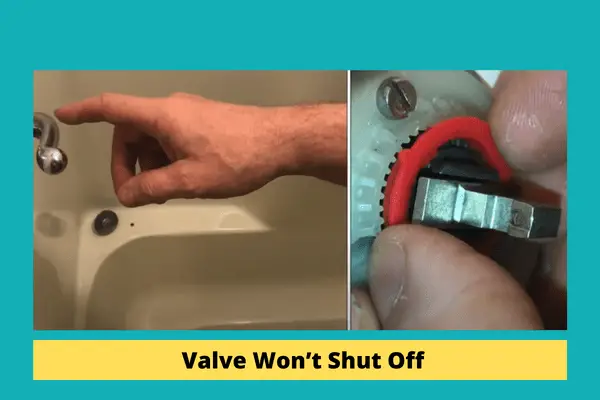
Key Reasons:
- American Standard shower valve won’t shut off if the shower handle is loose.
- A broken or damaged cartridge fails to turn off a water outlet.
Symptoms:
- Water keeps dripping from the faucet or showerhead
- The handle requires excessive force and pressure to control the valve
Solution:
- First of all, see the tightness of the handle. If the handle is loose, try stabilizing it by tightening the main handle screw behind the lever.
- But when the screw threads seem stripped, replace the screw with a new one.
- You must bring out the cartridge on the condition that the handle system is completely fine but the valve isn’t shutting off. Separate the handle from the valve. After that bring out the cartridge carefully.
- Replace the cartridge with a similar model and reinstall everything back properly.
- Despite all that effort, the valve might still not shut off the water supply. In that case, hire a plumber for deep troubleshooting.
FAQs:
How do you know if the shower valve needs to be replaced?
Mostly, when you can’t fix a shower valve, it means the valve is no longer of any use. A broken or damaged shower valve fails to regulate temperature and pressure along with following the command flawlessly. If you see your shower valve acting the same, don’t hesitate to replace it.
How often should shower valves be replaced?
Shower valves easily last for 20-30 years. You don’t need to replace your shower valve so often unless it has any major issue.
How do I know if my shower valve is broken?
A broken shower valve fails to turn on or off the water supply completely. Also, Damaged valves make handle movement very hard.
Can a shower leak through grout?
Yes, it is possible that tiles can suffer from shower leakage. And because of the leakage, the wall or floor layer becomes less attractive and vulnerable.
Summary
Fixing common shower valve problems isn’t a hard nut to crack. You need to know the right ways to solve the issues, there’s no need for any major experience.
But one thing’s for sure, no solution is absolute. There might be situations when the familiar problem becomes huge and there’s no other way except to replace the valve system. At those moments, don’t hesitate to replace the valve thinking of the expense. You better hire an expert and let him handle things with care. For more details, you can reach us any time.


About James
James founded HomeUpgradeLab & was sharing his experiences to fix issues related to bathroom and toilet fixtures & fittings. Read to know more about James Hill & how he started this blog.